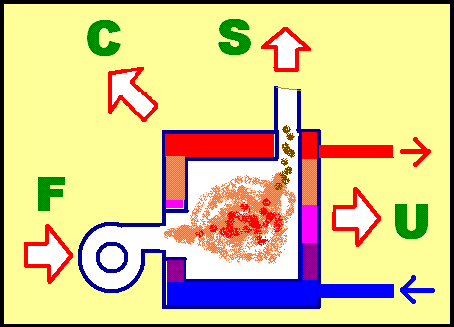- Base temperature
- In the calculation of degree day values, the outside air temperature at which the building requires no artificial heating (or cooling, as the case may be). For guidance on establishing the correct base temperature see this page.
- Baseline
- Commonly a figure for annual quantity of energy used as a reference against which to compare future consumption when evaluating savings, ideally adjusted to account for differences in circumstances (esp. weather and production etc.) between the two years being compared. A better approach might be to think of a baseline performance characteristic, that is, the model which historically described the relationship between consumption and its driving factor(s). By substituting reporting-year values for said driving factor(s) one arrives directly at an estimate of the consumption that would have occurred in the absence of intervening changes in energy performance. This permits the absolute saving to be calculated.
- Benchmarking between heating systems
- More..
- Biodiesel
- More..
- BEMS
- Building Energy Management System. Computerised system for sensing conditions within a building and controlling the delivery of heating, cooling, etc., in accordance with time schedules. Read more on automatic controls in buildings.
- Blowdown
- Deliberate dumping of boiler water to remove suspended solids or sludge
- Bogus products
- If you suspect that a product is being advertised with false claims, or even just that the claims cannot be substantiated, it is possible to complain to the Advertising Standards Authority (see for example this adjudication in the case of the so-called "current optimization" device marketed by Blue Carbon). Download our current occasional paper on the hallmarks of bogus offerings.
- Boiler
- Strictly, equipment in which heat (usually from combustion of fuel) is used to generate steam, although commonly used to denote equipment for the generation of hot water for a heating system.
- Budget forecasting using degree days
- More..
- Building heat rate
- Rate of heat loss in watts per degree inside-outside temperature difference (W/K). Takes into account conduction (thermal transmission through the building envelope) and convection (heat losses in ventilation and infiltration). See this calculation tool
- Building Regulations, UK, Part L
- More..
- Burner
- More..

Boiler heat balance